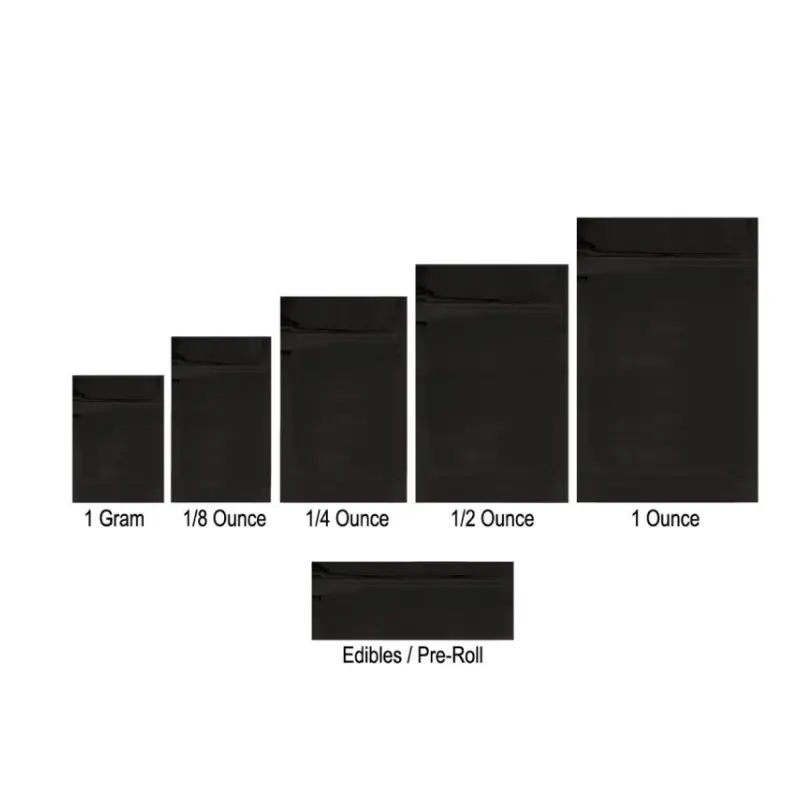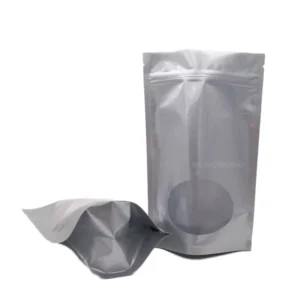Choosing the right Mylar bag size is crucial for effective product packaging and preservation. This comprehensive guide dives into the world of Mylar bag dimensions, exploring various sizes and their ideal applications. Whether you’re storing food, electronics, or other sensitive items, understanding Mylar bag sizes will ensure optimal protection and efficient use of space.
We’ll cover everything from small, individual-serving pouches to large, bulk storage options. Learn how to measure your products accurately and match them with the perfect Mylar bag size. This guide will empower you to make informed decisions, maximizing the benefits of Mylar bags for your specific needs.
What Are Mylar Bags
Recommended products
Mylar bags are a type of flexible packaging made from a polyester film that is coated with aluminum. This unique construction gives Mylar bags exceptional barrier properties, making them ideal for protecting sensitive items from moisture, oxygen, and light. They are known for their durability and ability to preserve freshness, making them a popular choice for food storage, electronics packaging, and long-term preservation of various goods.
The aluminum layer in Mylar bags acts as a barrier against gases and light, while the polyester film provides strength and flexibility. This combination of materials makes Mylar bags highly resistant to punctures and tears, ensuring the safe storage and transportation of your products. Their versatility and protective qualities have made Mylar bags a staple in various industries, from food and beverage to electronics and pharmaceuticals.
Mylar Bag Size Chart
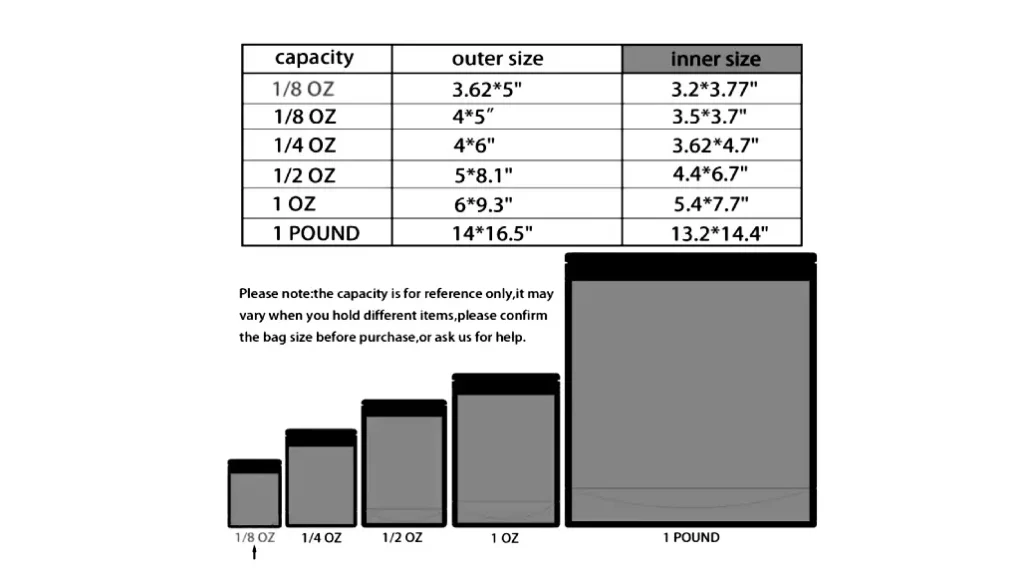
Mylar bags are a popular choice for packaging and storing a wide range of products due to their exceptional protective properties. They are made from a polyester film coated with aluminum, which creates a barrier against moisture, oxygen, and light. This makes them ideal for preserving freshness and extending the shelf life of various items.
When it comes to selecting the right Mylar bag, size is a critical factor. The size of the bag will determine its capacity and suitability for specific items. To help you make an informed decision, we have compiled a comprehensive Mylar bag size chart that covers a variety of common sizes and their typical uses.
Mylar Bag Size Chart
| Bag Size (inches) | Typical Uses | Recommended Contents |
|---|---|---|
| 2×3 | Samples, Jewelry | Small items, jewelry, coins |
| 3×4 | Small Electronics, Cosmetics | Small electronics, cosmetics, jewelry |
| 4×6 | Food Portions, Small Items | Food portions, small tools, documents |
| 5×7 | Medium Electronics, Documents | Medium electronics, documents, small tools |
| 6×8 | Food Storage, Small Tools | Food storage, small tools, medium-sized items |
| 7×10 | Large Electronics, Books | Large electronics, books, small tools |
| 8×12 | Bulk Food, Large Items | Bulk food, large items, tools |
| 10×14 | Large Items, Bulk Storage | Large items, bulk storage, clothing |
| 12×16 | Extra Large Items, Bulk Storage | Extra large items, bulk storage |
| 14×20 | Very Large Items, Bulk Storage | Very large items, bulk storage |
This chart provides a general guideline for selecting Mylar bags based on their size and intended use. However, it’s essential to consider the specific dimensions and requirements of your products when making your final decision.
In addition to size, Mylar bags also come in various thicknesses. The thickness of the bag affects its durability and protective properties. Thicker bags offer greater protection against punctures and tears, making them suitable for heavier or more fragile items.
When choosing Mylar bags, it’s crucial to consider both size and thickness to ensure your products are adequately protected and preserved. By referring to the size chart and understanding the different thickness options, you can select the perfect Mylar bags for your specific needs.
Gallon Size Mylar Bags
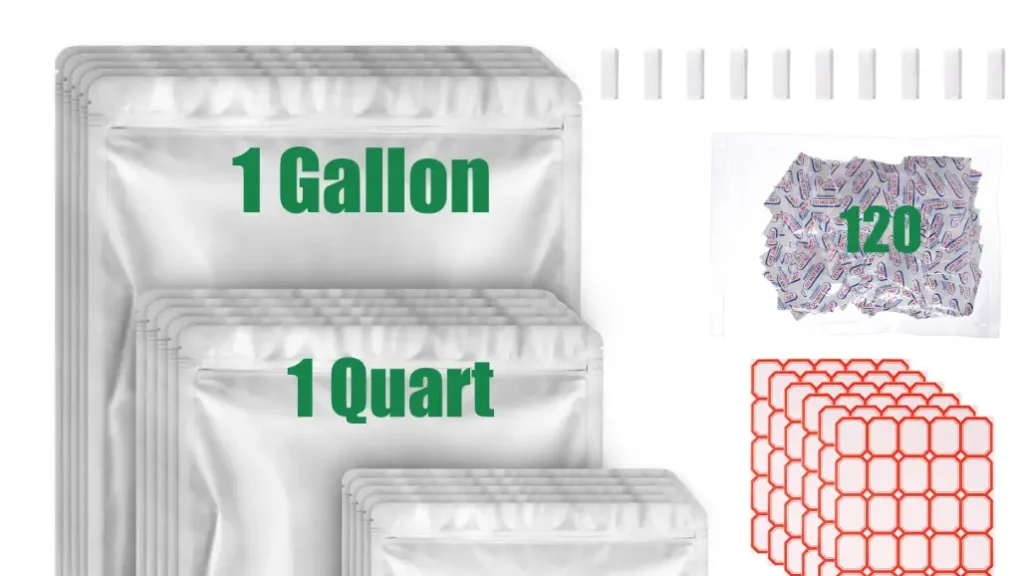
Gallon-size Mylar bags are a popular choice for storing and preserving a variety of items, particularly food, due to their exceptional protective properties. Made from a polyester film coated with aluminum, these bags offer a superior barrier against moisture, oxygen, and light, ensuring your goods remain fresh and protected for extended periods.
These bags are ideal for storing bulk food items like grains, rice, beans, and dried fruits, as well as larger quantities of snacks, pet food, and even non-food items like documents or sensitive electronics. Their gallon capacity makes them versatile for both home and commercial use, providing a reliable solution for long-term storage or transportation.
When choosing gallon-size Mylar bags, consider factors like thickness, closure type (zipper, heat seal), and whether you need gussets for added capacity. Opting for high-quality bags from a reputable supplier ensures your items are stored safely and maintain their quality over time.
Quart Size Mylar Bags
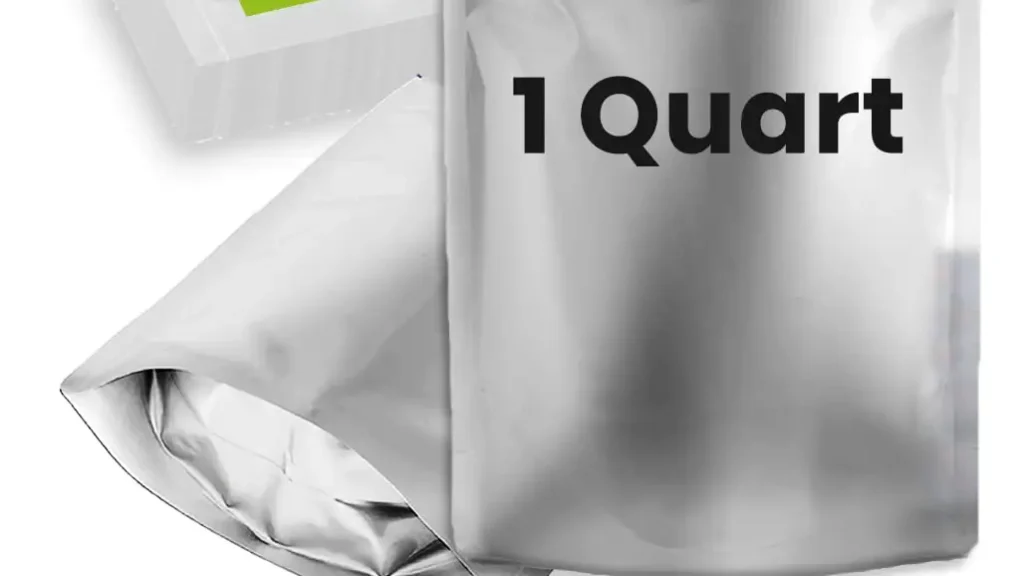
Quart-size Mylar bags are a versatile and practical solution for storing and preserving a variety of items.1 Their convenient size makes them ideal for portioning food, organizing supplies, and protecting sensitive materials. Made from a durable polyester film coated with aluminum, these bags offer superior protection against moisture, oxygen, and light, ensuring your products remain fresh and secure.2
These bags are perfect for storing individual servings of food, such as snacks, spices, coffee beans, or pet food. They also come in handy for organizing small items like jewelry, craft supplies, or electronic components. Their quart capacity offers a balance between practicality and space efficiency, making them a popular choice for both home and commercial use.
When selecting quart-size Mylar bags, consider factors such as thickness, closure type (zipper, heat seal), and whether you need stand-up pouches for easy display. Choosing high-quality bags from a reliable supplier guarantees your items are stored safely and maintain their quality over time.
Snack Size Mylar Bags
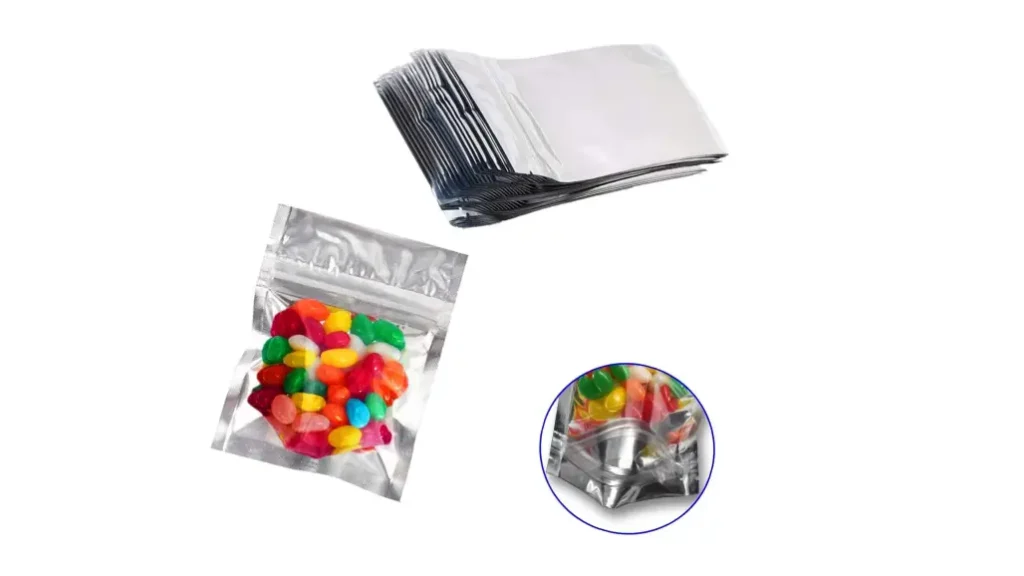
Snack-size Mylar bags are the perfect solution for packaging and preserving individual servings of treats, snacks, and other small items. Their compact size makes them ideal for portion control, on-the-go snacking, and party favors. Made from a durable polyester film coated with aluminum, these bags offer excellent protection against moisture, oxygen, and light, ensuring your snacks stay fresh and flavorful.
These bags are commonly used for packaging candies, cookies, nuts, chips, and other small treats. They’re also great for storing small craft supplies, jewelry, or even medications. Their small size makes them convenient for packing lunches, taking on trips, or simply keeping snacks organized in your pantry.
When choosing snack-size Mylar bags, consider factors like thickness, closure type (zipper, heat seal), and design. Opt for resealable zippers for easy access and repeated use, or heat sealable bags for long-term storage. A variety of colors and designs are often available, allowing you to choose bags that match your brand or personal style. Selecting high-quality bags from a reputable supplier ensures your snacks are protected and maintain their quality.
How to Measure Mylar Bag Sizes
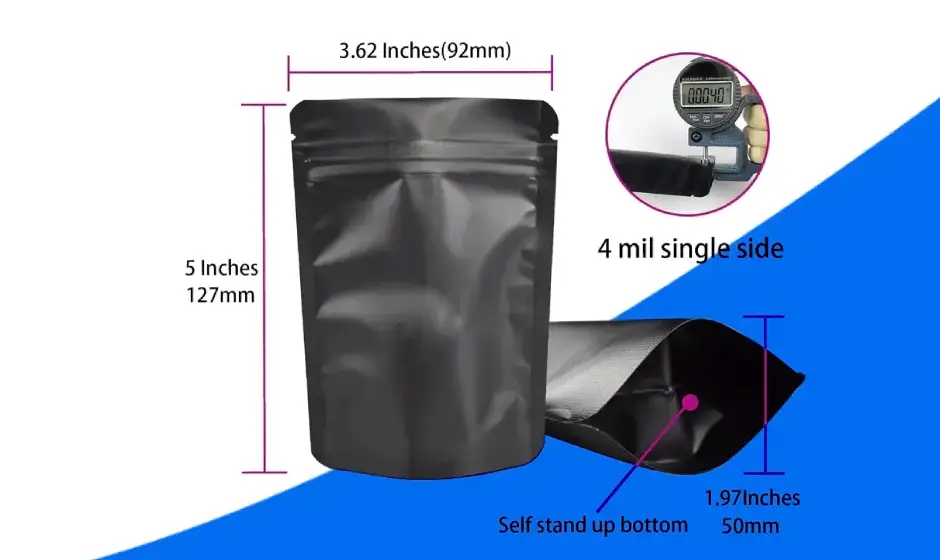
Accurately measuring Mylar bag sizes is essential for selecting the right packaging for your products. Whether you’re storing food, electronics, or other sensitive items, knowing the precise dimensions of your Mylar bags ensures proper fit, protection, and efficient use of space.
This guide provides a step-by-step approach to measuring different types of Mylar bags, enabling you to make informed decisions about your packaging needs.
How to Measure Mylar Bag Sizes
Choosing the right size Mylar bag is crucial for effective packaging and storage. Here’s a guide on how to accurately measure Mylar bags:
Step 1: Identify the Bag Type
Mylar bags come in various styles, including flat bags, stand-up pouches, gusseted bags, and bags with zippers or heat seals. Understanding the type of bag you’re measuring is the first step, as different styles may require slightly different measurement techniques.
Step 2: Gather Your Tools
You’ll need a ruler or measuring tape. A flexible measuring tape is often best for bags with gussets or unusual shapes. Ensure your measuring tool is accurate and uses the unit of measurement you prefer (inches or centimeters).
Step 3: Measure the Width
- Flat Bags: Lay the bag flat on a surface. Measure across the widest part of the bag, from one side to the other.
- Stand-Up Pouches/Gusseted Bags: Measure across the widest part of the bag when it’s standing upright and filled (or simulated as filled).
- Bags with Zippers/Heat Seals: Measure the width of the bag opening, from one inner edge to the other.
Step 4: Measure the Length
- Flat Bags: Lay the bag flat. Measure from the top edge to the bottom edge.
- Stand-Up Pouches/Gusseted Bags: Measure from the top of the bag (including any zipper or seal) to the bottom of the bag.
- Bags with Zippers/Heat Seals: Measure from the top of the bag (including the zipper or seal) to the bottom of the bag.
Step 5: Measure the Gusset (If Applicable)
If your bag has a gusset, measure its width. Lay the bag on its side and measure the width of the gusset at its widest point. This measurement indicates how much the bag can expand when filled.
Step 6: Note Your Measurements
Record your measurements clearly, including the bag type (e.g., flat, stand-up pouch) and the units used (e.g., inches, centimeters). If the bag has a gusset, note that measurement separately. For example: “Stand-up Pouch: 6″ Width x 8″ Length x 2″ Gusset”.
Step 7: Consider the Usable Space
Remember that the actual usable space inside the bag might be slightly less than the measured dimensions due to seams, seals, and the bag’s construction. If you’re packaging a specific item, ensure the internal dimensions of the bag will comfortably accommodate it.
How to Measure Mylar Bag Thickness
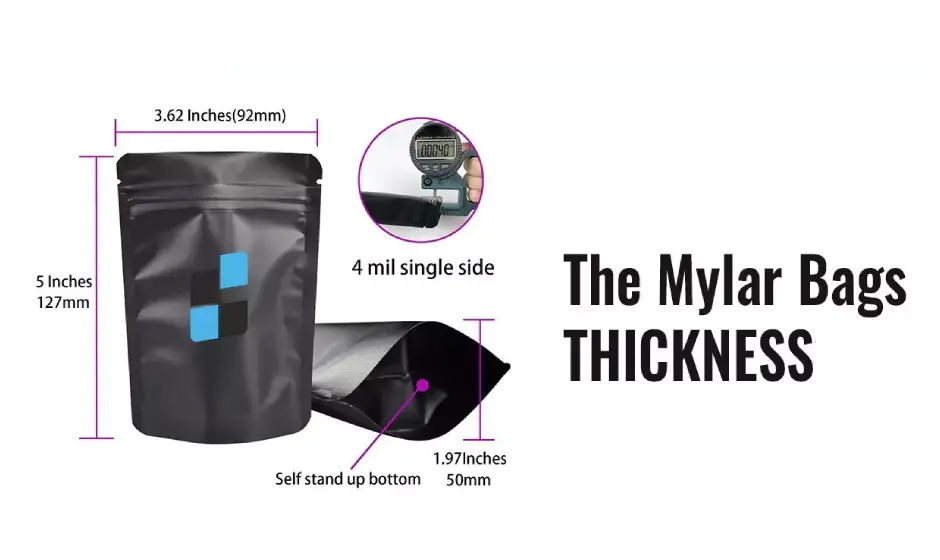
Measuring the thickness of a Mylar bag requires specialized tools and careful handling. Here’s a step-by-step guide:
Step 1: Gather Your Tools
You’ll need a micrometer (specifically a film thickness micrometer is ideal), and a small, sharp blade (like a razor blade or utility knife). A standard micrometer used for measuring metal might not be sensitive enough for thin films like Mylar.
Step 2: Prepare the Sample
Cut a small, clean sample from the Mylar bag. Avoid areas near seams or edges, as these areas may have varying thicknesses. A square or rectangular piece about 1 inch by 1 inch is sufficient.
Step 3: Zero the Micrometer
Before measuring, ensure your micrometer is properly zeroed. Follow the manufacturer‘s instructions for calibration. This ensures accurate readings.
Step 4: Position the Sample
Carefully place the Mylar film sample between the anvil and spindle of the micrometer. Make sure the sample is flat and not folded or creased at the point of measurement.
Step 5: Take the Measurement
Gently close the micrometer spindle onto the sample until you feel a slight resistance. Do not overtighten, as this could compress the film and give an inaccurate reading. Read the measurement displayed on the micrometer. Most micrometers display readings in mils (one-thousandth of an inch) or micrometers (one-millionth of a meter).
Step 6: Repeat the Measurement
For greater accuracy, it’s recommended to take multiple measurements at different points on the sample and average the readings. This helps account for any variations in thickness across the bag.
Step 7: Record Your Measurement
Record your measurement, including the units used (mils or micrometers). If you took multiple readings, record each one and calculate the average.
Important Considerations:
- Cleanliness: Ensure the micrometer and the Mylar sample are clean and free of dust or debris that could affect the measurement.
- Pressure: Apply consistent and light pressure when taking the measurement. Excessive force can deform the film.
- Accuracy: Micrometers provide very precise measurements. Be sure to read the instrument carefully and record all significant digits.
- Alternatives: If you don’t have access to a micrometer, you can sometimes get an estimate of the thickness by comparing the bag to known thicknesses of other Mylar films. However, this is not as accurate as using a proper measuring instrument. Contacting the bag manufacturer for the specified thickness is another option.
FAQs
What Are Standard Mylar Bag Thicknesses?
Standard Mylar bag thicknesses are typically measured in mils, with one mil equaling one-thousandth of an inch. Common thicknesses range from 2 mil to 7 mil, although thicker options are available for specialized applications.
Thinner bags (2-3 mil) are often used for lighter items and short-term storage, while thicker bags (4-7 mil and above) provide greater durability, puncture resistance, and extended protection, making them suitable for heavier items, long-term storage, and products requiring enhanced barrier properties. The appropriate thickness depends on the specific needs of the product being packaged and the desired level of protection.
How Thick Should Mylar Bags Be for Food Storage?
For food storage, Mylar bags should ideally be 4 mil or thicker. This thickness provides a good balance of durability and protection against oxygen, moisture, and light, which are the primary culprits in food spoilage. While thinner bags might suffice for short-term storage or less sensitive foods, 4 mil or thicker bags offer superior long-term preservation, especially for items like grains, dried beans, and dehydrated foods. For extra-long storage or particularly sensitive foods, 5 mil or even thicker bags are recommended.
Conclusion
Choosing the right Mylar bag size is crucial for effective packaging. This guide has explored various sizes and considerations, from small pouches for samples to larger bags for bulk storage. Understanding these dimensions ensures your products are protected and presented optimally. Remember to factor in product dimensions, desired capacity, and packaging requirements when making your selection.
Ultimately, the perfect Mylar bag size depends on your specific needs. We hope this guide has provided valuable insights to help you make informed decisions. Whether you’re storing food, electronics, or other sensitive items, the right Mylar bag size ensures freshness, protection, and a professional presentation.
Ready to customize your ideal Mylar bags? BN Pack offers a wide range of sizes and customization options. Contact us today to discuss your specific requirements and create the perfect Mylar bag and box solution for your products.
